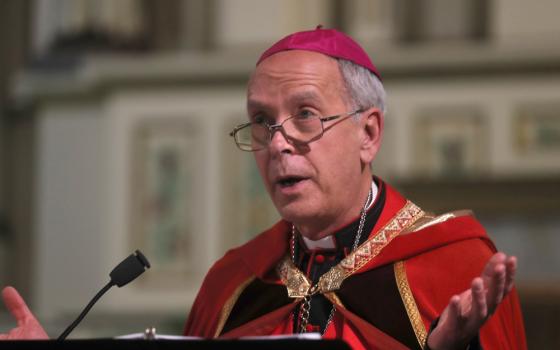There was no Thanksgiving column last year because, for the first time since I began writing this weekly column in early July 1966, I had to suspend it for about three months for medical reasons.
In 2009, however, I had done a column in thanksgiving for the greatest single asset to the Catholic church in the United States (and I almost certainly can include Canada here): the thousands of nuns who have served the church in so many extraordinary ways: in parishes, in schools, in hospitals, in shelters for women, in prisons, as college and university faculty members, chaplains, residence hall rectors and in so many other ministries, too many to count.
It took Vatican actions against religious communities of women to make some Catholics begin to appreciate the nuns' contributions to the church in America. But whatever it took, many Catholics came to appreciate the good that the sisters have done for so many of us over many years.
Fortunately, the investigative atmosphere has taken a turn for the better in recent months, first with the resignation because of age of Cardinal Franc Rodé as prefect of the Congregation for Institutes of Consecrated life and Societies of Apostolic Life and then with the appointment of Archbishop João Braz de Aviz of Brazil as Cardinal Rodé's successor, and of Archbishop Joseph W. Tobin as Secretary of the Congregation. Both appointments represent distinct improvements over their predecessors.
Of course, there is a second investigation hovering over the first; namely, the one conducted by the Congregation for the Doctrine of the Faith (CDF), led by Cardinal William Levada. This one is an investigation of the Leadership Conference of Women Religious (LCWR), which represents about 95 percent of religious communities of women in the United States.
The recent change of top personnel in the Congregation for Institutes of Consecrated Life and Societies of Apostolic Life augurs well for the eventual outcome of that particular "visitation," but unfortunately there has been no comparable change in the CDF, nor is there likely to be.
However, the reaction to both investigations has been so negative that our hope is that the two procedures will simply die on the vine, much like the investigation of U.S. seminaries.
But as we look forward to the Thanksgiving holiday in the United States (in Canada, Thanksgiv-ing was celebrated Oct. 10), we need to focus on the positive.
The religious women in the United States have been targeted by the Vatican because the U.S. Catholic church is the most important in the world, and the American sisters are the most important organized group of religious women in the world.
My November 2009 column happily appeared soon after Sr. Sandra Schneiders' excellent article on ministerial religious life was published in the Oct. 2 issue of the National Catholic Reporter.
As her article pointed out, it was not until 1900 that noncloistered apostolic congregations of women were formally recognized as an authentic form of religious life. Pope Leo XIII did this.
However, this papal action did not create a new form of religious life. It was simply the official recognition of a fait accompli that had been in existence for almost 400 years.
Before 1900 and even up to the Second Vatican Council in 1962, the sisters were forced to live a kind of hybrid life: virtually the whole of monastic life in the convent and full-time ministerial life at work, including teaching in parish schools.
Some Catholics were at least vaguely familiar with that hybrid life; most were completely unaware of it.
The typical nonstop 17-hour day (5 a.m to 10 p.m.) required nuns to be dressed at all times in habit, attend daily Mass (sometimes followed by Benediction), fit in meditation, devotional exercises (e.g., the Rosary and Stations of the Cross), some form of the Divine Office, spiritual reading from assigned books, daily manual work assignments in the convent, three meals in common, often in silence, and an hour of "recreation," which usually included handwork or mending, schoolwork or parish and community tasks.
On the same day, the nuns prepared classes and had a full day's professional schedule in school, hospital or other Catholic institutions.
In short, they were, as noted above, monastics at home and apostles abroad. It was Pope Pius XII who launched the process of renewal that would be taken up by Vatican II more than a decade later.
No wonder they were often called "the good sisters"! We can never tire of singing their praises–in thanksgiving for all that they have done, and continue to do, for the people of God.
© 2011 Richard P. McBrien. All rights reserved. Fr. McBrien is the Crowley-O’Brien Professor of Theology at the University of Notre Dame.
| Editor’s Note: We can send you an e-mail alert every time Fr. McBrien’s column, "Essays in Theology," is posted to NCRonline.org. Go to this page and follow the directions: E-mail alert sign-up. If you already receive e-mail alerts from us, click on the "update my profile" button to add "Essays in Theol-ogy" to your list. |


